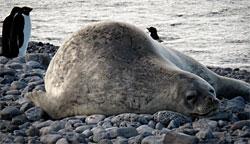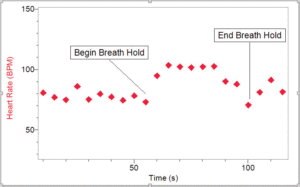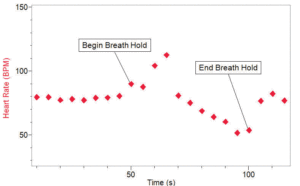Dr. John Melville, our Director of Biology, developed an innovative diving reflex laboratory exercise while teaching at Wartburg College. In the lab, students learn basic heart anatomy, histology of arteries and veins, and perform an EKG using Vernier sensors. The students then develop their own experiment, which often involved the diving reflex.

Weddell Seal
The diving reflex is an adaptation found in marine mammals for diving in cold water. During a dive, there is a reduction in heart rate, referred to as bradycardia, or the diving reflex. The majority of research on the diving reflex has been done on seals. The Weddell seal of Antarctica is a great example. Weddell seals can hold their breath for extended periods (20 minutes to an hour) and can dive to depths of 500 meters. During each dive, heart rate and cardiac output decrease dramatically as blood is shunted away from the extremities and directed to the vital organs.
A much smaller version of the diving reflex occurs in humans and is easy to demonstrate in the lab using a few Vernier sensors, a large bowl of cold water, or a cold pack on the face. When cold water (10°C or less) contacts the face, the diving reflex is elicited. Breathing is inhibited and heart rate decreases. This response is not observed during normal breath holding in air or when the face is placed in warm water. Heart rate will actually increase in these two conditions.
- Holding breath increases heart rate
- Holding breath in cold water decreases heart rate
The sample data in the left graph show an increase in heart rate when John held his breath in air. The sample data in the right graph show the diving reflex. A distinct drop in heart rate is observed when John held his breath and put his face in a bowl of cold water. This diving reflex is most pronounced a few seconds into the “dive.”
Sample data and graphs from both of these and other conditions (cold water, air, warm water, cold pack on the face) and a full description of the lab exercise can be downloaded below.


